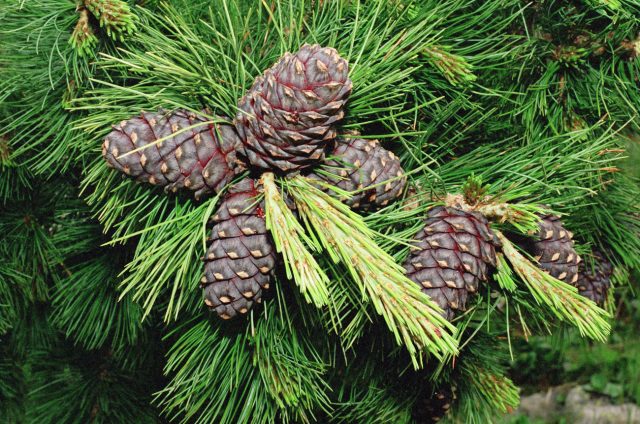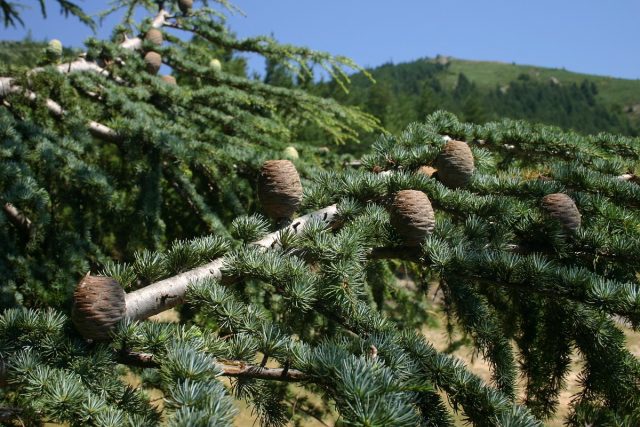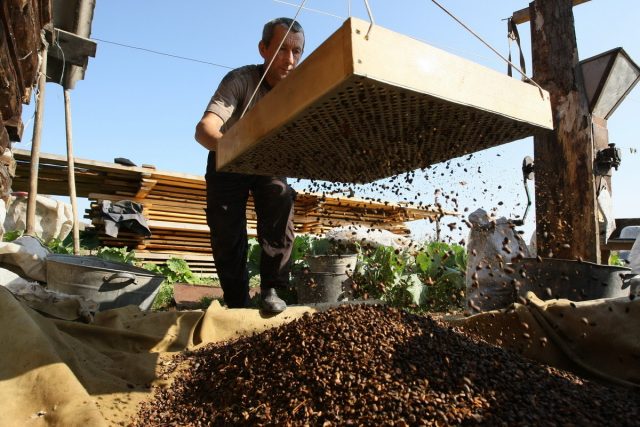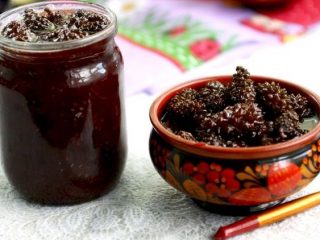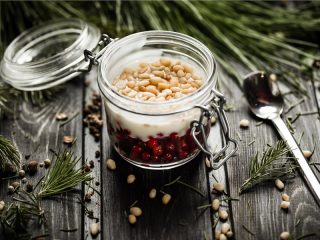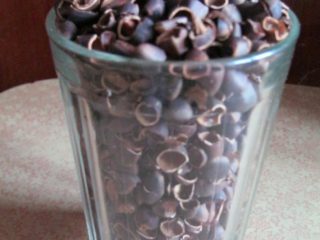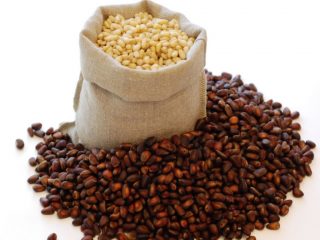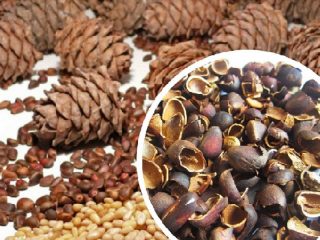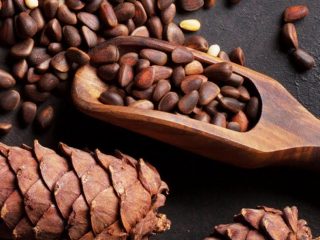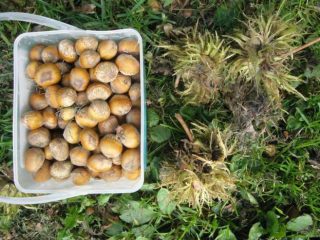Content
Pine nuts, suitable for food, grow on several types of pine, the distribution area of conifers is all over the world. Siberian cedar pine gives seeds only after 20 years of growth. They ripen for two years and have useful properties. The composition includes proteins, amino acids, fats and a complex of vitamins.
What do pine nuts grow on?
In Russia, seeds are harvested not only from the Siberian Cedar pine. The name conditional tree does not apply to cedars. This is a different species, the pine got its name by its external resemblance to the cones of the Lebanese cedar. The difference lies in the fact that cedar seeds are small, unsuitable for food, equipped with small, dense wings (for wind transfer).
Nuts are collected from three types, on which cones with suitable seeds grow:
- Pine European.
- Dwarf cedar.
- Korean pine.
Siberian pine - one of the oldest on the planet, is a symbol of Siberia. An evergreen coniferous tree grows up to 45 m in height. Vegetation is slow, about 1.5 months a year, so it forms the first cones after 20 years.
The photo shows pine cones where pine nuts grow:
- mature modified shoots have the shape of an elongated oval, narrowed upwards, 10-15 cm long, 7 cm in diameter;
- in the process of ripening purple, then brown;
- the surface consists of rigid, diamond-shaped shields up to 1.8 cm;
- the scales adhere tightly to the cone, thickened at the base with dark compacted pigment;
- seeds up to 14 mm long, 9 mm, 250 g approximately 1 thousand seeds;
- elongated, rounded at the base, tapering upward (ovoid);
- dark brown with a brown tint.
Each cone contains up to 120 pcs. pine nuts. Seeds ripen for 15 months, unopened cones fall off only by the fall of next year. Seeding in Siberian pine is periodic, the collection is carried out 1 time in 4-6 years.
Where pine nuts grow
In nature, there are about 20 species of pines, on which cones grow with seeds suitable for consumption. The growing area covers the northern part of the Russian Federation, Asia, Europe, North America.
Where does pine nut grow in Russia
In Russia, nuts are supplied by three types of conifers:
- Siberian pine, occupies the European part, directly northeast and Eastern Siberia. The main accumulation in the Eurasian taiga part.
- Korean pine, whose homeland is Japan. In Russia, it grows in the Far East in the Khabarovsk Territory, Priamurye, Primorye. It reaches a height of 60 m, the modified shoots are large, up to 500 cones with good seed filling (150 pcs.) Are formed on 1 tree. Seeding once every 4 years. In the wild, it fully produces cones for 10-15 years.
- Dwarf cedar - a close relative of the Siberian pine. The undersized shrub has spread from the north of Eurasia to the Arctic Circle. Grows on flat terrain and mountain slopes. It can be found in the polar regions of Chukotka; the southern border runs near the Khabarovsk Territory. Cones are small in size, nuts are not inferior in weight to Siberian cedar. It enters the seed-bearing phase after 20 years of growth, forms formations at the end of the shoot every 3 years. It gives seeds without age restriction (up to 200 years).
The ripening period of seeds for all varieties is the same, 2 years pass from the formation of cones to falling off.
In the world
In Asia: in Japan and northeast China, nuts are harvested from Korean pine.In the Himalayas, the Gerard pine is found, which gives edible seeds. In China, nuts also grow on Chinese white pine, they are smaller in size and inferior in energy value to the seeds of the Siberian cedar. In Afghanistan - Bunge Pine (White Pine).
In Europe, pine nuts are harvested from the following pines:
- Kamennaya (Pinia), the distribution area of the Mediterranean, from the Iberian Peninsula to Asia Minor.
- European, grows in the Alps, Carpathians in the southern part of France.
- Swiss spread from Canada to Maine and Vermont (USA).
- In North America, Pinion Pine is the supplier of nuts.
When pine nuts are harvested
The pine nut harvesting season is focused on the Siberian pine. The collection begins in early or mid September. Dates depend on the weather of the summer season. A favorable time for ripening and light shedding of cones is a wet summer. In drought, they are firmly fixed to the branch with the help of resin, they fall badly.
It is impossible to shoot down unripe seeds, as damage is done to the food supply of birds and taiga animals. Late collection is limited to the hunting season. The harvesting of nuts ends with the first snowfall, approximately at the end of October. The time allotted for fishing is approximately 1.5 months. Spring harvest takes place from April to May, fallen fruits are collected, the effectiveness of spring harvesting is much lower.
How pine nuts are obtained
The process of collecting pine nuts is quite laborious. It is carried out in several stages. An artel is assembled from several people with different functional loads. The scouts are the first to leave the taiga, followed by the rest of the brigade. They have been fishing for a week: they collect cones, peel, extract pine nuts.
The collection is carried out in several ways:
- They pick up already fallen cones that the animals did not take away. The method is unproductive, the cones fall unevenly, most of them remain on the pine tree.
- There is always a man in the artel who climbs trees. He climbs a tree, with the help of a long pole with a hook at the end, knocks down the cones, they are collected below.
- They climb a tree with the help of special devices on shoes in the form of long spikes (claws). This method is less dangerous, but requires certain skills.
- The most laborious type of fishing is knocking down with a log hammer. This device with a long handle and a sledgehammer at the end, weighs 50 kg. They put him to the trunk of a tree, pull him back with the help of ropes, and let him go. From the blow, the tree shakes, the cones come off in a continuous stream.
Collect the material in bags and take it to the parking lot for further cleaning.
How is processed after collection
Before going out into the taiga, they prepare the equipment necessary to obtain pine nuts. Processing is carried out in the following way:
- Cones are crushed in a box with a built-in shaft inside, which has a surface in the form of a grater. The bottom of the device is lattice. Below, under the crusher, spread cloth or cellophane.
- Separate pine nuts from garbage using a sieve with large meshes, sift again through small ones. Cleaning can be done by discarding, fragments of debris are easier, they are thrown further, the seeds are crumbled in one place.
- If the camp is located near a reservoir, cleaning can be done with water. Stagnant water or a slow flowing river is suitable for this purpose. On the shallows, at the bottom of the river, a film is stretched, fixed with stones, and seeds are poured in a thin layer in the middle. Debris and shields will be carried away by the current or rise to the surface. The method is less laborious, but pine nuts will take longer to dry.
- After separation from the garbage, pine nuts are dried. A sheet of metal is installed over the fire, seeds are poured onto it, dried, constantly stirring.Then they are poured into one heap in the corner of the tent, the bags are not used until transportation.
The cedar seeds collected in a heap are constantly mixed. After transportation, spread in a thin layer to evaporate the remaining moisture. When the year is lean and the time spent in the taiga will be short. The material is collected in bags, taken home and cleaned on site.
Conclusion
Pine nuts grow all over the world. There are several varieties of pine that produce edible seeds. The best in terms of chemical composition and energy value, nuts grow on Siberian pine, but in terms of the content of active substances, Siberian dwarf pine is in no way inferior.
